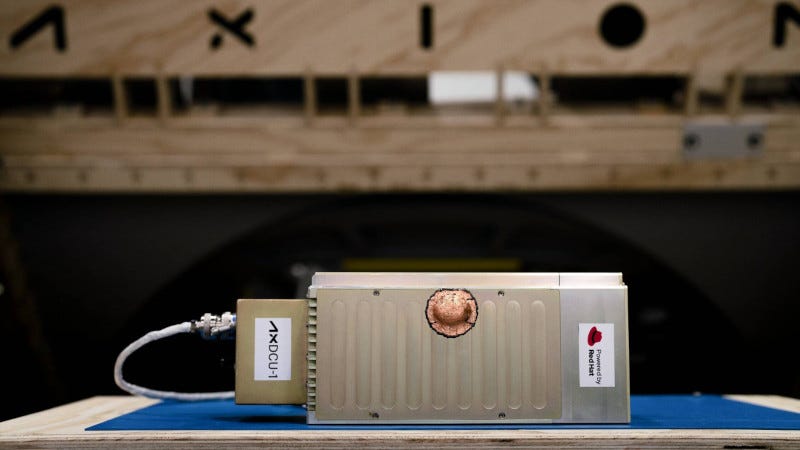Testing an Orbital Data Center Aboard ISS to Advance Space Computing
Axiom Space and Red Hat to Demonstrate Expanded Computing Capabilities in Space
A cutting-edge orbital data center will test advanced computing capabilities in space aboard the International Space Station. The technology demonstration, sponsored by the ISS National Laboratory, involves Axiom Space and Red Hat working together to evaluate data storage and real-time processing systems needed for future commercial space operations.
"This technology could enable real-time processing of data close to where it is generated, reducing the need for downlink bandwidth, which is precious in space."
Tony James, Red Hat
The data center will launch to the ISS aboard the SpaceX CRS-33 mission, which is currently targeted for Sunday morning at 2:45 EDT. The demonstration will test the Axiom Space Data Center Unit One, powered by Red Hat Device Edge software, at the space station orbiting 248 miles above Earth. “This technology could enable real-time processing of data close to where it is generated, reducing the need for downlink bandwidth, which is precious in space,” said Tony James, chief architect of science and space at Red Hat. “It could also enable time-sensitive decision making and a bit of autonomy. As experiments are running in space and decisions need to be made, you aren’t having to wait hours or days for information from the ground.”
Space-based computing faces unique challenges including power constraints, radiation exposure and isolation from ground support systems. The demonstration aims to prove that advanced computing can operate reliably in these harsh conditions while providing the autonomous capabilities needed for future space missions.
"You need to ensure a space-based software platform has an appropriate level of resistance to damage from harsh conditions and the ability to self-heal with limited or no human intervention," said Tony James, chief architect of science and space at Red Hat. "The system we are testing addresses those capabilities."
The data center software uses open-source technology, encouraging global collaboration among developers. James noted that this approach proves "open-source development truly unlocks the world's potential, even at 248 miles above Earth where the space station orbits."
Advanced space computing could enable real-time health monitoring for astronauts on lunar missions, using sensors in spacesuits to track vital signs and alert ground control to potential medical emergencies. The technology could also improve terrestrial data centers and aircraft systems by increasing energy efficiency.
Research and manufacturing on future commercial space stations will require robust data storage and processing systems, making this demonstration critical for the growing commercial space industry.
Our Take
This mission represents a significant step toward creating autonomous computing infrastructure in space. As commercial space stations prepare to replace the aging ISS, reliable data processing capabilities become essential for research, manufacturing and astronaut safety.
The success of this demonstration could accelerate the development of space-based industries and enable more complex scientific research beyond Earth's atmosphere. The technology could also benefit Earth-based systems through improved energy efficiency and resilience features developed for the space environment.





